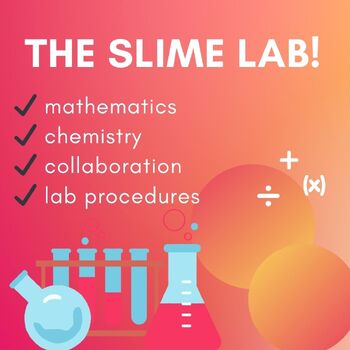Slime Lab - Metric Conversions and Collaborative Experiment
- Google Docs™

Also included in
- Elevate your science curriculum with this Hands-On Science Lab Bundle – a comprehensive collection of engaging and interactive laboratory experiences designed to ignite curiosity and foster inquiry-based learning.Dive into the fascinating world of chemistry with a diverse array of experiments, rangiPrice $15.00Original Price $20.00Save $5.00
Description
This lab is a wacky twist to traditional experiments that will have students practice their metric conversions by making slime! Transform the classroom into a laboratory of exploration with this hands-on, project-based learning experiences. Fuel student's curiosity with the wonders of slime to encourage student involvement and provide a solid foundation in chemistry and math concepts!
In this laboratory, students will:
- Work together to follow a procedure
- Collaborate when stuck to problem-solve as a group
- Convert quantities to standard metric units using dimensional analysis
- Recognize and use measurements in metric quantities
- Safely and correctly use a scale and graduated cylinder
- Observe and write about the properties of a material
This lab comes with a collaboration checklist that students can use when they get stuck. When I ran this lab in my classroom, I told students they only got "one free question" from me - the rest was up to them to figure out as a group. They were scored not only on their procedure and math, but also on their collaboration skills!
This lab also comes with a teacher's guide and shopping list for teachers to prep the lab. The lab could be used as a mid-unit practice for using metric measurements and performing unit conversions, or could also be used to assess those ideas in small groups.






